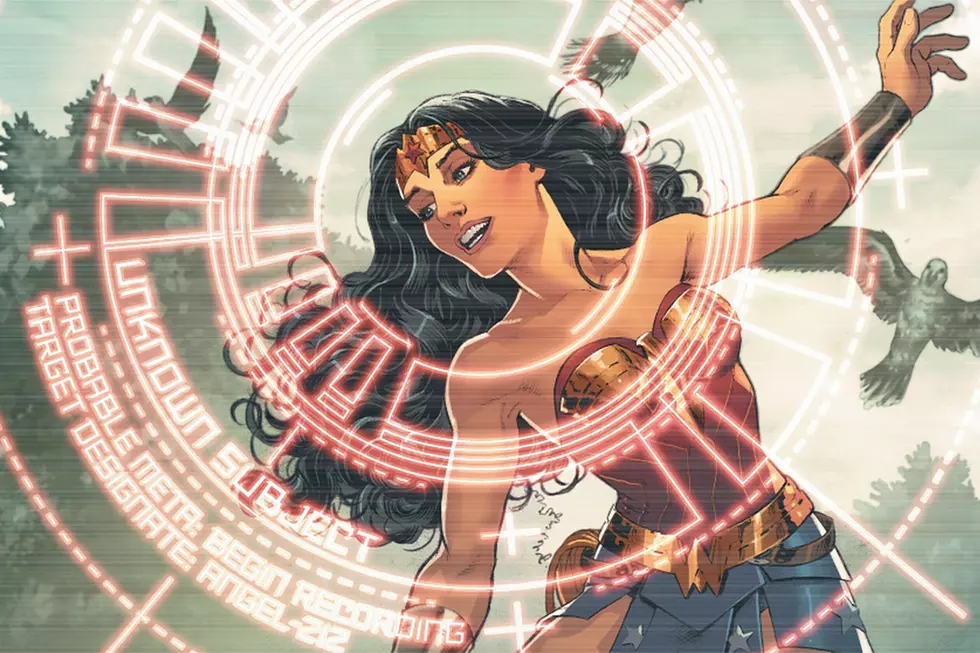![In ‘Lazarus’ #1, Greg Rucka And Michael Lark Explore The Absence Of Love [Review]](http://townsquare.media/site/622/files/2013/06/lazarus-header.jpg?w=980&q=75)
In ‘Lazarus’ #1, Greg Rucka And Michael Lark Explore The Absence Of Love [Review]
Sometimes a writer and an artist bring out the best in each other. Greg Rucka would probably tell you how fortunate he's been to work with several especially fantastic artists throughout his career: JH Williams III, Yoshitaka Amano, and Steve Lieber, just to name a few. Likewise, Michael Lark has been paired with some excellent writers like Ed Brubaker and Dean Motter. But Rucka and Lark may be at their best when working together, as they did on the neo-classic Gotham Central, so it was no surprise that last year's announcement of Lazarus, their new series from Image Comics, was met with significant praise from readers, critics, and other creators alike.
Like Brian K. Vaughan and Fiona Staples' Saga, Lazarus was the kind of comic book that seemed destined to be critically lauded even before anyone read it. Image Comics, knowing what it had on its hands, marketed the book at every opportunity, releasing artwork well in advance as well as a short story set in the Lazarus universe. But all the early praise did give me some pause. I love what both creators have accomplished together, but sometimes reality can't live up to the hype, even when everything looks good on paper (so-to-speak). But I can confirm Lazarus #1 is a success. Let's take a look at why.
Commentary on class structure has been a significant part of art for about as long as we've had structured society, but it may be more present in popular media right now than it has been in some time. Several recent big budget films, bestselling novels and highly rated television shows have been either subtle metaphors or very clear statements about differences in class. This isn't surprising. Good art is a reflection of society, and the news cycle in recent years has been dominated primarily by stories of the rapidly increasing gap between the haves and have nots in western culture. Lazarus is a part of that conversation.
The first issue forgoes in-story exposition by giving you everything you need to know in a brief description on the inside cover:
The World now lies divided not amongst political or geographical boundaries, but amongst financial ones. Wealth is power, and that power rests with only a handful of Families. The few who provide a service for their ruling Family are cared for. All others are Waste.
It's all right there. Lazarus represents our society, taken to an extreme, but one that you could argue isn't that far off in the distance. Wealth and power are one and the same, and in this comic, both are concentrated between a select few warring Families. But there's much more to the series than that. At the center of the story is Forever Carlyle -- or simply Eve -- a child of wealth genetically engineered to be her family's "Lazarus," meaning protector/enforcer. But right from the beginning, we're told this isn't a role she's comfortable with.
The first nine pages of Lazarus #1 present darkness, desperation, and striking violence. They may also be the nine most beautiful pages of Michael Lark's career, and that's saying something for the artist of Terminal City and Batman: Nine Lives. Aided by excellent color work from Santi Arcas, Lark's illustrations immerse the reader immediately with several effective panels throughout the opening scene. We see a woman in shadow -- a person we quickly learn is called Forever -- being brutally shot down in her own home. The combination of violence and beauty is difficult to pull off, but Lark and Arcas do so effortlessly here, to the degree that by the time the scene is over, you find yourself wishing it would continue. The sequence serves as a way to display Forever's abilities and her conflict with how she's asked to use them. Forever rises from a bloody scene and attacks her assailants, who it turns out were of the "have not" variety (or Waste, as they're known in Lazarus), and had broken into her Family's home desperately seeking food.
This incident sets Forever's somber and reflective mood for the rest of the story. We see her interacting with her doctor and brother, whose concerns and interests stand in stark contrast to her own. Forever has difficulty dealing her abilities, role, and status in the societal hierarchy, but the doctor and her brother Jonah experience no conflict. They're at the top of the social ladder, and that's where they belong. And manipulating Forever, who trusts them both implicitly, in order to retain their power is an easy decision for these men to make.
The introduction of Jonah is the point where you realize that Lazarus isn't just about class. It's also about family and what that means. In the most important moment of the issue, Forever, at the callous insistence of her brother, is forced to seemingly kill a man whose only crime is wanting to protect his own family. The juxtaposition of their situations is significant: Forever protects her family because that is what she's been raised and engineered to do. Her victim -- whose name we're never given -- sacrifices himself for his family without a moment's hesitation, as if it's the easiest decision in the world, because he's driven by dignity and love. In his final six words, Forever's victim makes her realize love is a concept she's never known, and in the process he may have saved her soul.
Lazarus #1 is a new spin on a familiar premise. Rucka is trying to say something about morality, about love, and about the consequences when both are absent and replaced with power. It's an old story, but the strength of this tale isn't in originality. The strength of Lazarus is in the execution. It's in the message. And it's in the hope that Forever finds what she's looking for... what she needs. By the time you finish the first issue, you'll find yourself hoping -- maybe even needing -- Forever to find something better than she has now. That says something about the character and the comic, but it probably says more about us.
More From ComicsAlliance









